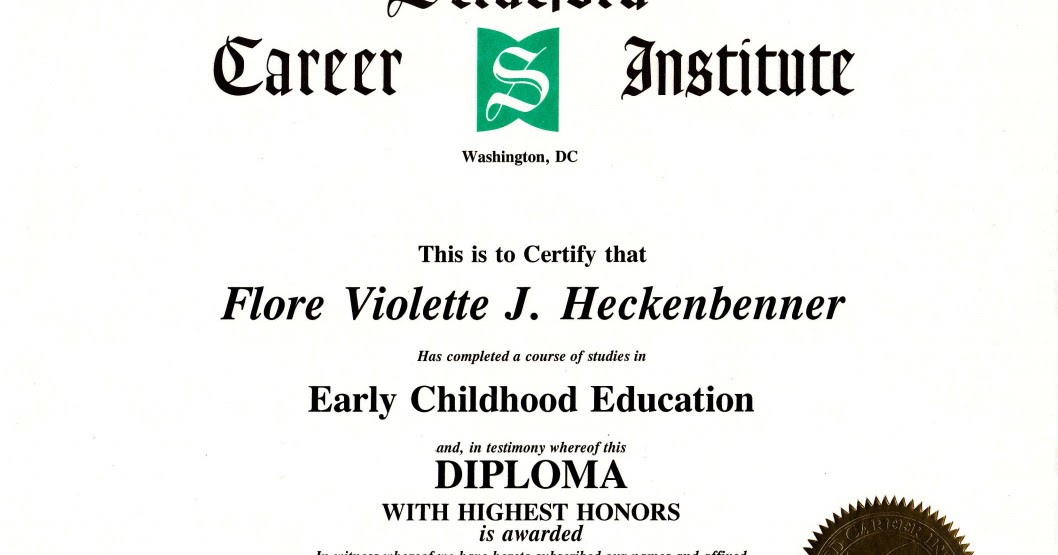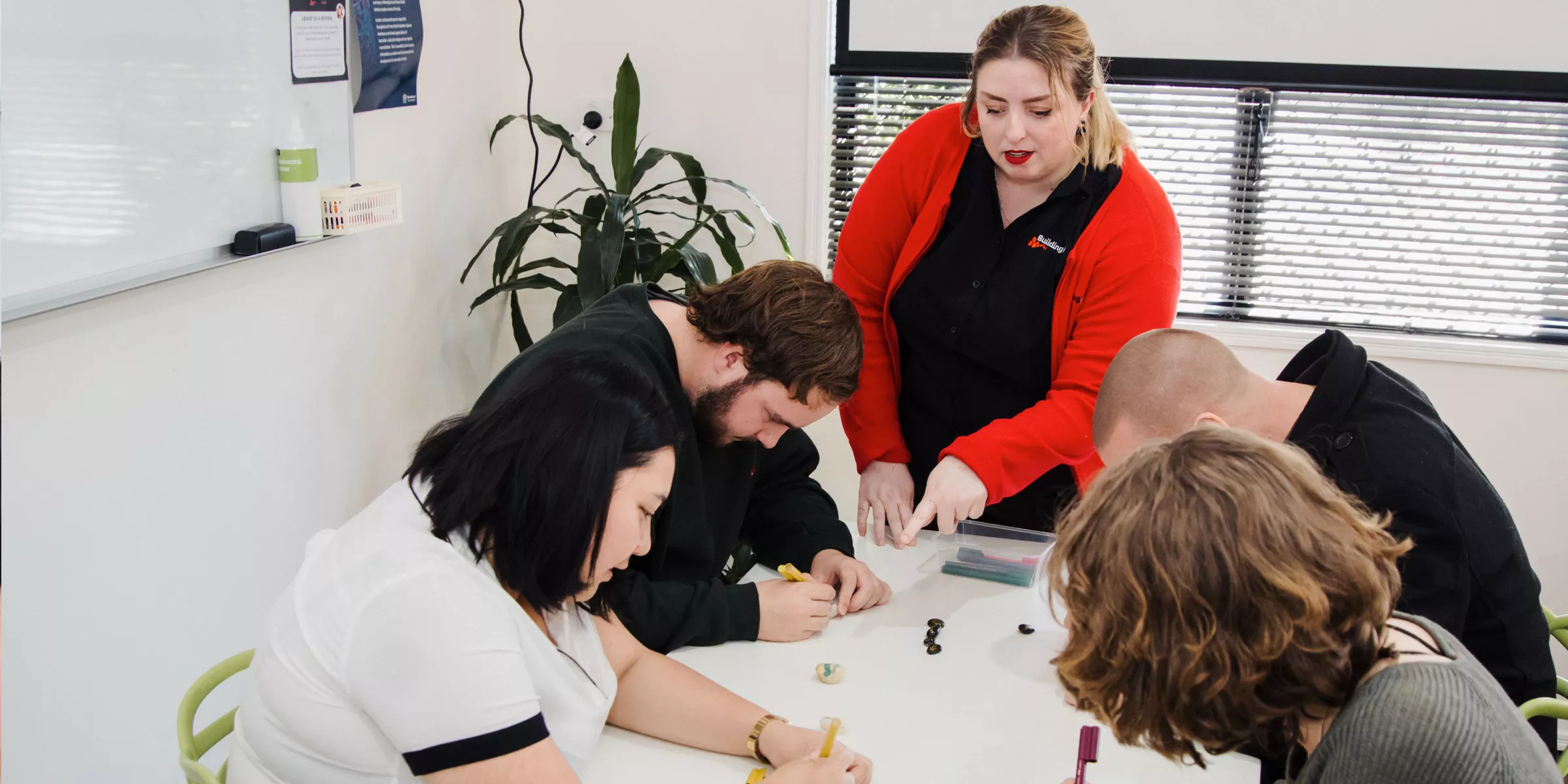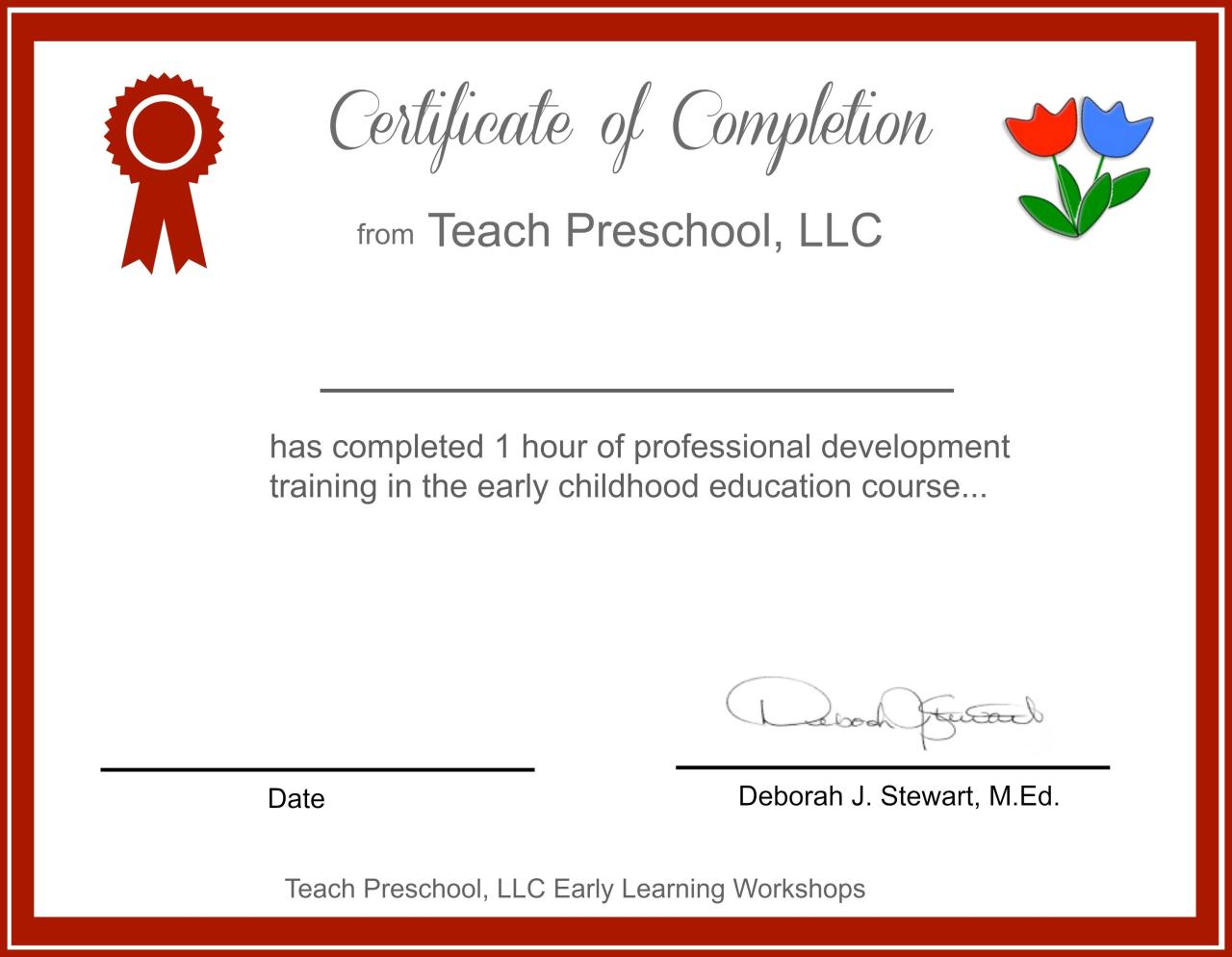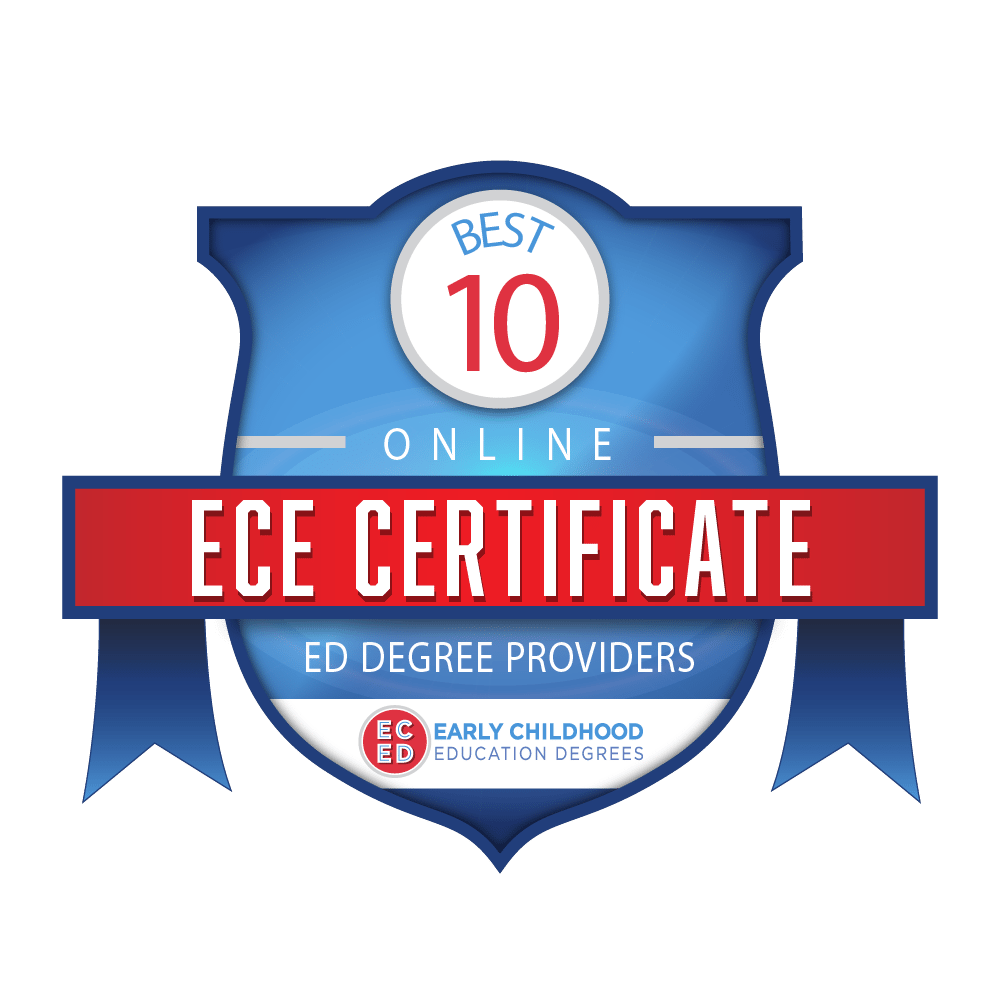Early Childhood Education Certification: Want to shape young minds and build brighter futures? Navigating the world of early childhood education certifications can feel overwhelming, with various pathways and requirements. This guide breaks down the essentials, from understanding different certification types and accreditation processes to exploring diverse pedagogical approaches and professional development opportunities. Get ready to unlock the rewarding career of nurturing the next generation!
This comprehensive guide will equip you with the knowledge you need to choose the right certification path, understand the accreditation process, and master effective teaching strategies. We’ll delve into different pedagogical approaches, highlight professional development opportunities, and explore the vital role early childhood education plays in a child’s development. Plus, we’ll tackle the challenges and future trends shaping this dynamic field.
Types of Early Childhood Education Certifications

Navigating the world of early childhood education certifications can feel overwhelming. The path to becoming a qualified educator involves various levels of commitment and ultimately impacts your career trajectory and earning potential. Understanding the different certification types available is crucial for making informed decisions about your professional development. This section provides a detailed overview of the various certification pathways, highlighting their requirements, career prospects, and potential salary ranges.
Early Childhood Education Certification Levels and Requirements
Choosing the right early childhood education certification depends on your existing educational background and career aspirations. The options range from associate’s degrees to postgraduate certificates, each with its unique requirements and benefits. The following table summarizes the key differences.
| Certification Type | Requirements | Career Paths | Earning Potential |
|---|---|---|---|
| Associate’s Degree in Early Childhood Education (ECE) | Typically requires completion of 60-65 credit hours, including coursework in child development, early literacy, and classroom management. May include fieldwork or practicum experiences in childcare settings. | Assistant teacher, preschool teacher, childcare center staff. | Varies significantly by location and experience, but generally ranges from $25,000 to $40,000 annually. Entry-level positions often fall at the lower end of this range. |
| Bachelor’s Degree in Early Childhood Education (ECE) | Requires completion of 120 credit hours, building upon the foundation of an associate’s degree. Includes advanced coursework in child psychology, curriculum development, and assessment. Significant fieldwork or student teaching is typically required. | Lead teacher, preschool director, curriculum coordinator, family child care provider. | Generally ranges from $35,000 to $60,000 annually, depending on experience, location, and employer. Experienced teachers and those in leadership roles earn significantly more. For example, a preschool director in a large city might earn closer to the higher end of this range. |
| Master’s Degree in Early Childhood Education (ECE) | Requires a bachelor’s degree and completion of additional coursework, often focused on research, leadership, or specialized areas within ECE. May involve a thesis or capstone project. | University professor, curriculum developer, program administrator, early childhood consultant, specialized roles in research or advocacy. | Can range from $50,000 to $80,000 or more annually, depending on experience and position. Positions in higher education or leadership roles typically command higher salaries. For example, a university professor with tenure might earn a significantly higher salary. |
| Postgraduate Certificates in Early Childhood Education | Typically requires a bachelor’s degree in a related field. Focuses on specific areas like special education, bilingual education, or early intervention. Coursework and potentially fieldwork are required. | Specialized roles working with children with disabilities, bilingual programs, or early intervention services. | Salary varies widely based on specialization and location, but generally aligns with the salary range of a bachelor’s degree holder, with potential for higher earnings in specialized fields with high demand. |
Accreditation and Recognition of Early Childhood Education Programs
Choosing the right early childhood education program is a significant decision for parents, and understanding the accreditation process is key to ensuring quality. Accreditation signifies that a program meets specific standards of excellence, providing assurance of a high-quality learning environment for young children. This isn’t just about a piece of paper; it’s a commitment to best practices and continuous improvement.Accreditation ensures that programs adhere to established benchmarks in curriculum, teacher qualifications, health and safety, and overall program administration.
It’s a rigorous process, and the benefits extend to both the children and the educators. Graduates from accredited programs often find it easier to secure employment, as prospective employers recognize the value of the rigorous training and assessment involved.
Accrediting Bodies and Their Evaluation Criteria
Several organizations provide accreditation for early childhood education programs. These bodies employ a range of criteria to evaluate programs, focusing on aspects critical to a child’s development and well-being. Common assessment areas include the program’s curriculum, the qualifications and professional development opportunities for teachers, the physical environment’s safety and suitability, and the program’s overall administration and financial stability.
Furthermore, the effectiveness of the program in promoting children’s learning and development is a central consideration. Accrediting bodies often conduct site visits, review documentation, and interview staff and parents as part of their comprehensive evaluation process.
Nationally Recognized Accrediting Organizations and Their Standards
Several organizations are nationally recognized for their rigorous accreditation processes. For example, the National Association for the Education of Young Children (NAEYC) is a prominent accrediting body in the United States, known for its comprehensive standards covering all aspects of early childhood education. NAEYC accreditation signifies a commitment to high-quality practices and continuous improvement. Another example is the Council for Accreditation of Early Childhood Program Services (CACESP), which focuses on providing accreditation to programs that demonstrate a commitment to diversity, equity, and inclusion.
These organizations provide detailed standards that programs must meet to achieve accreditation, outlining expectations for teacher qualifications, curriculum design, health and safety procedures, and family engagement. Meeting these standards demonstrates a dedication to providing children with the best possible learning experience.
Comparison of Accrediting Bodies
| Accrediting Body | Key Criteria | Benefits for Graduates |
|---|---|---|
| National Association for the Education of Young Children (NAEYC) | Curriculum, teacher qualifications, health and safety, program administration, and child outcomes. | Enhanced job prospects, recognition of high-quality training, and increased professional credibility. |
| Council for Accreditation of Early Childhood Program Services (CACESP) | Curriculum, teacher qualifications, health and safety, program administration, and commitment to diversity, equity, and inclusion. | Similar benefits to NAEYC accreditation, with an added emphasis on commitment to inclusive practices. |
| Other State or Regional Accrediting Bodies (vary by location) | Criteria vary depending on the specific organization and state/regional requirements. Often align with national standards but may include additional local considerations. | Benefits are similar to national accreditation, although recognition may be more regionally focused. |
Curriculum and Pedagogical Approaches in Early Childhood Education Programs
Early childhood education thrives on diverse pedagogical approaches, each with its unique strengths and philosophies. Understanding these approaches is crucial for educators to create stimulating and developmentally appropriate learning environments. This section explores four prominent approaches: play-based learning, Montessori, Reggio Emilia, and Waldorf, examining their core principles, practical applications, and comparative advantages and disadvantages.
Play-Based Learning
Play-based learning centers child-led exploration and discovery through various play activities. It recognizes play as a fundamental aspect of child development, fostering creativity, social skills, and cognitive growth.
Strengths of this approach include its adaptability to diverse learning styles, its promotion of intrinsic motivation, and its capacity to foster social-emotional development. Weaknesses can include challenges in assessing learning outcomes and the potential for unstructured time leading to less focused learning if not carefully managed.
Key Principles and Practices of Play-Based Learning:
- Child-initiated learning: Children choose their activities and learning paths.
- Process over product: The emphasis is on the learning experience rather than the end result.
- Open-ended materials: Resources that can be used in multiple ways, encouraging creativity.
- Social interaction: Collaboration and communication are integral to play-based learning.
- Adult guidance: Educators facilitate play, providing support and extending children’s learning.
Sample Lesson Plan: A play-based lesson on exploring shapes could involve providing children with blocks, building materials, and shape sorters. Educators observe, interact, and extend children’s play by introducing new shapes or prompting discussions about their properties. The focus is on the children’s engagement and exploration, with documentation focusing on their interactions and problem-solving strategies.
Montessori Approach
The Montessori approach emphasizes independence, freedom within limits, and a prepared environment designed to facilitate self-directed learning. It utilizes specifically designed materials that encourage hands-on exploration and self-correction.
Strengths include the development of self-reliance and concentration, and a strong emphasis on practical life skills. Weaknesses can include the cost of specialized materials and the potential for a structured environment to limit creativity for some children.
Key Principles and Practices of the Montessori Approach:
- Prepared environment: A carefully organized classroom with age-appropriate materials.
- Self-directed learning: Children choose their activities and work at their own pace.
- Hands-on materials: Sensory-rich materials that allow children to learn through exploration.
- Teacher as a guide: Educators observe, guide, and provide support as needed.
- Freedom within limits: Children have choices but operate within established classroom rules.
Sample Lesson Plan: A Montessori lesson on fractions could involve using fraction circles and rods. Children would manipulate these materials, exploring the concept of parts and wholes independently. The teacher would observe, provide guidance if needed, and offer extensions to challenge the children’s understanding.
Reggio Emilia Approach
The Reggio Emilia approach views children as competent and capable learners, emphasizing their potential for creativity and problem-solving. It values collaboration between children, teachers, and families, and uses the environment as the third teacher.
Strengths include its emphasis on child-initiated learning, its fostering of creativity and communication, and its strong community involvement. Weaknesses can be the resource-intensive nature of the approach and the potential for less structured learning experiences.
Key Principles and Practices of the Reggio Emilia Approach:
- The hundred languages of children: Recognizing children’s diverse ways of expressing themselves.
- The environment as the third teacher: The classroom is designed to stimulate learning and exploration.
- Project-based learning: In-depth exploration of themes chosen by children.
- Documentation of learning: Collecting and sharing children’s work to showcase their learning.
- Collaboration: Working together with children, families, and the community.
Sample Lesson Plan: A Reggio Emilia project on light and shadow might begin with children’s observations and questions about light. The project would evolve based on children’s interests, incorporating art, science, and dramatic play. Documentation would showcase the children’s discoveries and creative expressions throughout the project.
Waldorf Approach
The Waldorf approach emphasizes holistic development, focusing on imagination, creativity, and connection to nature. It uses a hands-on, experiential approach with an emphasis on art, music, and movement.
Strengths include its promotion of creativity and imagination, and its focus on social-emotional development. Weaknesses can be its lack of structured academic content in early years and the potential for limited exposure to technology.
Key Principles and Practices of the Waldorf Approach:
- Holistic development: Addressing the physical, emotional, intellectual, and spiritual aspects of the child.
- Imaginative play: Encouraging creativity and storytelling through play.
- Natural materials: Using natural materials in the classroom and activities.
- Rhythm and routine: Providing a predictable and calming environment.
- Artistic expression: Integrating art, music, and movement into the curriculum.
Sample Lesson Plan: A Waldorf lesson on seasons might involve storytelling, nature walks, and creating art using natural materials. Children might act out scenes from the stories, paint pictures of the changing leaves, and sing songs about the seasons. The emphasis is on sensory experiences and imaginative engagement.
Professional Development Opportunities for Early Childhood Educators

Continuous learning is crucial for early childhood educators to stay ahead of the curve in this ever-evolving field. Professional development isn’t just about accumulating credits; it’s about refining teaching methodologies, enhancing classroom management skills, and ultimately, providing the best possible learning environment for young children. Investing in professional growth directly translates to improved outcomes for the children in their care.Professional development opportunities for early childhood educators are diverse and readily available, catering to various learning styles and schedules.
These opportunities contribute significantly to improving teaching practices and keeping educators abreast of the latest research and best practices in early childhood education.
Securing your early childhood education certification is a major step, demanding long hours of study and dedication. Creating a comfortable and inviting learning environment at home is crucial, and that often starts with the right furniture; think about investing in comfortable and durable living room chairs for those late-night lesson planning sessions. Ultimately, a well-rested and comfortable educator is a better educator, so prioritizing your well-being alongside your career goals is key to success in early childhood education.
Types of Professional Development Opportunities
Numerous avenues exist for early childhood educators to pursue professional development. These opportunities range from intensive workshops and conferences to flexible online courses and self-directed learning. Access to these resources empowers educators to customize their professional growth journey, focusing on areas needing improvement or simply broadening their knowledge base.
- Workshops: Intensive, short-term training sessions focusing on specific topics like classroom management, specific curriculum implementation, or incorporating technology into early childhood education. These often involve hands-on activities and collaborative learning.
- Conferences: Larger-scale events offering multiple sessions, keynote speakers, and networking opportunities. Conferences provide exposure to a wide range of topics and perspectives within the field, fostering collaboration and the exchange of best practices.
- Online Courses: Flexible and convenient, online courses allow educators to learn at their own pace and schedule. These courses cover a wide spectrum of topics and often include interactive elements and assignments.
- Mentorship Programs: Pairing experienced educators with newer ones for guidance and support. This provides a personalized approach to professional development, fostering a supportive learning environment.
- Self-Directed Learning: Independent study through reading professional journals, attending webinars, or engaging with online resources. This allows educators to explore areas of personal interest and tailor their learning to specific needs.
Benefits of Continuous Professional Development
The benefits of ongoing professional development for early childhood educators extend far beyond personal enrichment. It directly impacts the quality of education provided and the overall well-being of the children in their care. Investing in this growth fosters a culture of continuous improvement within the field.
Securing an early childhood education certification is a big step, requiring dedication and the right environment. A calming, organized space is crucial for effective learning, and that extends to your personal life too! For inspiration on creating a peaceful atmosphere, check out these amazing modern living room ideas – a relaxing home helps you recharge for those demanding days with little ones.
Ultimately, a balanced life is key to excelling in early childhood education.
- Improved Teaching Practices: Professional development equips educators with new skills and strategies to enhance their teaching methodologies, leading to more engaging and effective learning experiences for children.
- Enhanced Classroom Management: Learning new techniques for classroom management can create a more positive and productive learning environment, reducing disruptions and maximizing learning time.
- Staying Current with Best Practices: The field of early childhood education is constantly evolving. Continuous professional development ensures educators remain informed about the latest research and best practices, leading to improved educational outcomes.
- Increased Job Satisfaction: Investing in personal and professional growth often leads to increased job satisfaction and a greater sense of accomplishment.
- Career Advancement Opportunities: Demonstrating a commitment to professional development can enhance career prospects and open doors to leadership roles within the field.
Resources and Organizations Offering Professional Development
Several reputable organizations and institutions offer a wealth of professional development opportunities for early childhood educators. These resources provide a diverse range of options, catering to various learning styles, budgets, and professional goals.
- National Association for the Education of Young Children (NAEYC): [Link to NAEYC website]
- Association for Childhood Education International (ACEI): [Link to ACEI website]
- Zero to Three: [Link to Zero to Three website]
- State-Level Early Childhood Education Agencies: Many states have agencies dedicated to early childhood education that offer professional development opportunities specific to their region. [Link to a sample state agency – replace with multiple state links as needed]
- Local Colleges and Universities: Many universities and colleges offer workshops, courses, and certificate programs in early childhood education.
The Role of Early Childhood Education in Child Development

Early childhood education (ECE) plays a pivotal role in shaping a child’s overall development, laying the foundation for future success in academics, careers, and life in general. High-quality ECE programs provide a nurturing and stimulating environment that fosters cognitive, social-emotional, and physical growth, impacting children’s lives in profound ways.High-quality early childhood education significantly impacts a child’s development across multiple domains.
These programs offer structured learning experiences designed to enhance cognitive abilities, build crucial social-emotional skills, and promote healthy physical development. The benefits extend far beyond the preschool years, influencing long-term academic achievement and overall well-being.
Impact of High-Quality Early Childhood Education on Child Development
High-quality ECE programs demonstrably improve children’s cognitive skills. Exposure to enriching activities like reading, storytelling, and interactive games enhances language development, problem-solving abilities, and critical thinking skills. Furthermore, these programs foster social-emotional growth by teaching children how to interact positively with peers, manage emotions, and develop empathy. Finally, structured playtime and physical activities contribute to healthy physical development, promoting gross and fine motor skills, coordination, and overall physical well-being.
Studies consistently show that children who attend high-quality ECE programs enter kindergarten with stronger foundational skills in literacy, numeracy, and social-emotional competence. For example, a longitudinal study by the Perry Preschool Project demonstrated that children who participated in their high-quality preschool program had significantly higher high school graduation rates and lower crime rates compared to a control group.
Long-Term Benefits of Early Childhood Education on Academic Achievement and Future Success
The benefits of early childhood education extend far beyond the preschool years, significantly impacting long-term academic achievement and future success. Children who attend high-quality ECE programs tend to perform better academically throughout their school years, demonstrating higher reading and math scores, and exhibiting greater school readiness. These advantages translate into increased opportunities for higher education, better career prospects, and improved overall economic well-being in adulthood.
For instance, research suggests that individuals who participated in early childhood intervention programs are more likely to graduate from college and earn higher salaries compared to their peers who did not have access to such programs. This positive trajectory suggests a strong correlation between early childhood education and long-term success.
Visual Representation of the Connection Between Early Childhood Education and Positive Child Outcomes
Imagine a tree. The roots represent the foundational skills and experiences gained in early childhood education – cognitive development, social-emotional learning, and physical development. The trunk represents the child’s overall well-being and resilience. The branches represent the positive outcomes – academic success, healthy relationships, successful careers, and a fulfilling life. The stronger the roots (high-quality ECE), the stronger and more robust the tree (the child’s future success) will be.
This illustrates how early childhood education provides a strong foundation that supports a child’s growth and development throughout their life.
Importance of Early Intervention for Children with Developmental Delays or Disabilities, Early childhood education certification
Early intervention services are crucial for children with developmental delays or disabilities. These programs provide specialized support and therapies that address specific needs, maximizing a child’s potential for growth and development. Early intervention can significantly improve a child’s cognitive, social-emotional, and physical skills, leading to improved educational outcomes and greater independence in adulthood. For example, early intervention for children with autism spectrum disorder can lead to improved communication skills, social interaction, and adaptive behaviors, enhancing their quality of life and opportunities for future success.
The earlier intervention begins, the greater the positive impact.
Challenges and Future Trends in Early Childhood Education: Early Childhood Education Certification

The early childhood education (ECE) field, while crucial for a child’s development, faces significant hurdles and is simultaneously experiencing transformative shifts. Understanding these challenges and embracing emerging trends is vital for ensuring high-quality, accessible ECE for all children. This section examines the key obstacles, promising advancements, and potential solutions shaping the future of this critical sector.
Key Challenges in Early Childhood Education
The ECE sector grapples with several interconnected challenges that impact its effectiveness and accessibility. Addressing these requires a multifaceted approach involving policymakers, educators, families, and communities.
| Challenge | Description | Example |
|---|---|---|
| Teacher Shortages | A persistent lack of qualified and experienced early childhood educators contributes to high teacher turnover and larger class sizes, negatively impacting the quality of care and education. | Many ECE centers struggle to fill open positions, leading to reliance on less-qualified staff or increased workloads for existing teachers, resulting in burnout and decreased morale. |
| Funding Limitations | Insufficient funding at the local, state, and federal levels restricts access to quality ECE programs, particularly for low-income families. This often leads to understaffed programs, inadequate resources, and lower teacher salaries. | Many public preschool programs operate with limited budgets, resulting in a lack of essential supplies, outdated equipment, and limited opportunities for professional development for teachers. |
| Access to Quality Care | Unequal access to high-quality ECE programs based on socioeconomic status, geographic location, and other factors creates disparities in educational outcomes. | Children in low-income neighborhoods often have limited access to licensed, high-quality ECE programs, leading to developmental delays and educational disadvantages compared to their more affluent peers. |
Potential Solutions to Address Challenges
Overcoming the challenges in ECE requires a collaborative effort and strategic investments.
| Challenge | Potential Solution |
|---|---|
| Teacher Shortages | Increase teacher salaries and benefits, offer comprehensive professional development opportunities, and create more accessible pathways into the ECE profession, including loan forgiveness programs and tuition assistance. |
| Funding Limitations | Increase public funding for ECE programs, explore innovative funding models such as public-private partnerships, and advocate for policies that prioritize early childhood education. |
| Access to Quality Care | Expand access to affordable, high-quality ECE programs through subsidies and vouchers, invest in infrastructure development in underserved communities, and promote universal preschool programs. |
Emerging Trends in Early Childhood Education
The ECE field is constantly evolving, adapting to new research and societal changes. These trends offer opportunities to enhance the quality and effectiveness of ECE programs.
| Trend | Description | Example |
|---|---|---|
| Increased Use of Technology | Technology is increasingly integrated into ECE classrooms to enhance learning experiences and provide engaging educational opportunities. | Interactive learning apps, educational software, and virtual field trips are becoming common tools in many ECE settings. |
| Emphasis on Social-Emotional Learning (SEL) | Growing recognition of the importance of social-emotional development in early childhood, with programs incorporating activities and strategies to promote self-awareness, self-regulation, and social skills. | Many ECE programs now incorporate mindfulness exercises, collaborative projects, and conflict-resolution strategies to foster SEL skills. |
| Focus on Play-Based Learning | A renewed emphasis on the importance of play as a primary mode of learning in early childhood, recognizing its role in cognitive, social, emotional, and physical development. | ECE programs are increasingly designing curriculum that integrates various forms of play, including dramatic play, construction play, and outdoor play. |